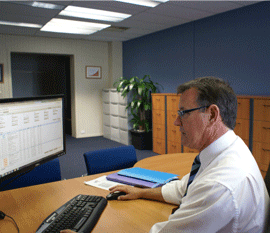
mfc Property
mfc clients often ask about property: when’s the right time to buy, when to sell, what’s happening in the market, have we bottomed out yet?
The latest index from RP Data reflects a really mixed bag, showing capital-city house prices fell by 1.2 per cent last month – disappointing given the Australia Reserve Bank’s rate reduction to an all time low of 2.75 per cent at the start of the month.
Still, while monthly stats are informative, most of us need a little more detail before we make a decision to buy or sell.
The May figures must be put beside the year-on-year house price index, which shows house prices rising in capital cities by 2.9 per cent between May 2012 and May this year.
A city-specific look illustrates this further. While Sydney had a drop in house prices of 1 per cent last month, it experienced a rise of 3.9 per cent over the previous year. Melbourne recorded a decline of 2.1 per cent last month but had a rise in house prices of 2.1 per cent over the year.
Close followers of house prices are often investors who look for total return on their properties, which combines rental yield and capital appreciation. This can be a good test of overall property value.
RP Data has Sydney’s total gross return on property at a solid 8.5 per cent, and Melbourne at a respectable 6 per cent. These are not as high as most investors want, or as high as Perth at 11.3 per cent, Darwin (11.2 per cent) and Canberra (7.8 per cent), but they are not low enough to dump property and move into stocks and bonds.
We have to put house prices alongside the Bureau of Statistics’ housing approval numbers. April approvals were low (0.4 per cent growth) but the year to April had 6.3 per cent growth.
So the picture for property – while divided by geography and seeming to be going backwards – is actually showing a slow recovery. Moreover, I always urge people interested in property to take this market in five-year to 10-year windows.
Take a look at RP Data’s longer series: the median dwelling price in the three months to May was $491,000. If you compare this to the median price in 2010 – $507,446 – you’d think you’d gone backwards. But compare the current price to May 2008 when it was $446,488. That’s a rise of $44,512, or just under 10 per cent growth in five years – five years of global turmoil and financial crisis.
In the end, property is a medium- to long-term asset: one step back can be countered by three steps forward. But you have to be patient and strategic: your investment needs time. It can’t reach the peaks if you sell in the troughs.
So I suggest people act on what’s under their control rather than becoming unnerved by property headlines.
This means looking at what affects you, and acting on what you can act upon. With the lowest interest rates I’ve ever seen, unemployment low and property prices recovering, this could be a good time for smart buying.
Comments are closed.

Follow Us!